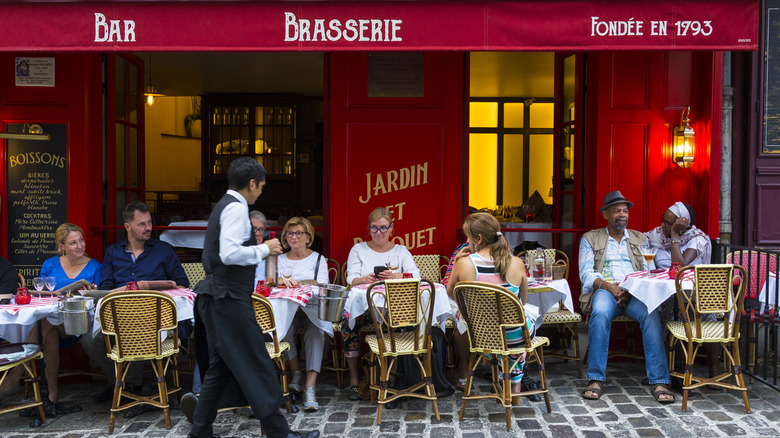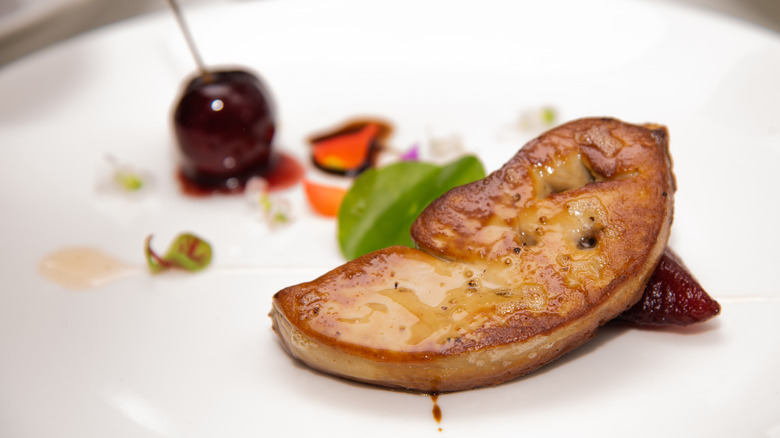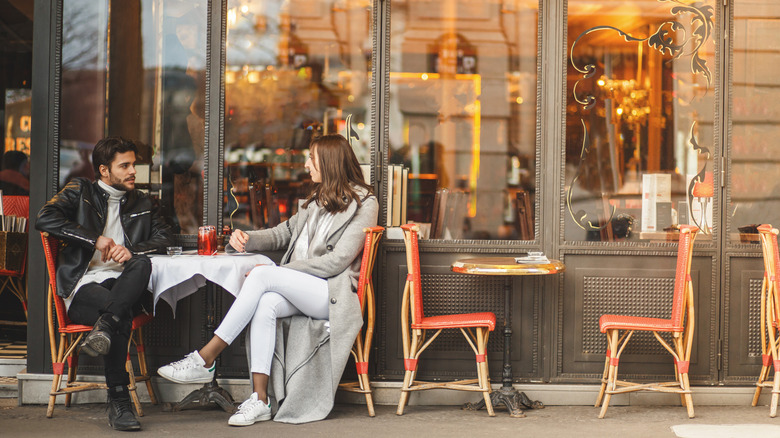The Key Difference Between A French Restaurant And A Brasserie
First-time visitors to France might find mealtimes difficult to navigate — not because they can't decide between onion soup and croque monsieur, but because of the number of eateries that exist in the European country, which go by several different titles. There are bistros, bouchons, cafées, pâtisseries, and over a half dozen more, all of which differ in their culinary offerings. Two which you're likely to see everywhere from smaller towns to bigger cities are brasseries and restaurants. While a restaurant is going to be a bit more formal and expensive than a neighborhood brasserie, the biggest difference between the two is the food.
When you walk into a brasserie, you can count on the menu being full of traditional French dishes like coq au vin, moules frites, steak tartare, and crème brûlée served in straightforward, even rustic ways, depending on the location. French restaurants certainly do serve French food, but it's this type of establishment where you might find other types of cuisines as well, like Middle Eastern, Peruvian, and Japanese food. And when French food is the specialty, the restaurant often puts its own unique spin on classic dishes.
What to expect at each
French brasseries are open for business from morning until evening, serving food all day long, which makes them perfect for any travelers with jet lag as they are reliable for being able to pop in at any time for some refreshment. Some describe these types of eateries as a combination of a bar and a restaurant, places where you can stop in for a drink and a sandwich, or a plate of steak frites for dinner — think similar to a British pub. The word "brasserie" means "brewery" in France and speaks to the origins of such places; 'brasseries artisanales' were basically beer crafters that served hearty foods to soak up alcohol. As time went on, the food at brasseries became the attraction rather than the booze, but the informal — sometimes boisterous — atmosphere and the menus of simple, good dishes remained.
French restaurants, on the other hand, are usually open for lunch and dinner during specific hours and close in between services. Lunch hours typically run between 12 and 2 p.m. and their dinner hours run later than American restaurants, from about 7:30 to 11 p.m. There are many levels of a restaurant's formality; obviously, Michelin-starred restaurants will warrant much higher prices thanks to the pristine atmosphere, service, and dish presentation, with possible dress codes for patrons to adhere to.
A dining room for all occasions
One of the best things about France's plethora of dining options is that no matter what your occasion or appetite, there is a place to accommodate you. In the mood for a coffee and croissant? Head to a café. Most cafés serve food but people mainly go for drinks, conversation, and people-watching. They are also great choices for late-night stops as cafés are typically open late, and you can get a reasonably priced nibble (think baguette sandwiches) rather than a full meal.
Perhaps you want a restaurant-y feel without the exorbitant price for a birthday celebration. A bistro is a perfect choice. Like restaurants, bistros are usually open for specific lunch and dinner hours and often offer international dishes alongside or fused with traditional French cuisine. Bistros tend to be quieter than brasseries but not as formal as restaurants.
Maybe you just want a casual, quick bite — one without much or any servers and possibly a place that offers food to go. France is full of eateries called 'restauration rapide' or 'service rapide,' meaning 'fast food.' Yes, places like McDonald's are part of this group, but so are crêperies where you can order a savory or sweet crêpe, as well as burger, pizza, falafel, and ramen joints. Indeed, it's easy to see why France is lauded for its food scene: There is just so much to choose from.



